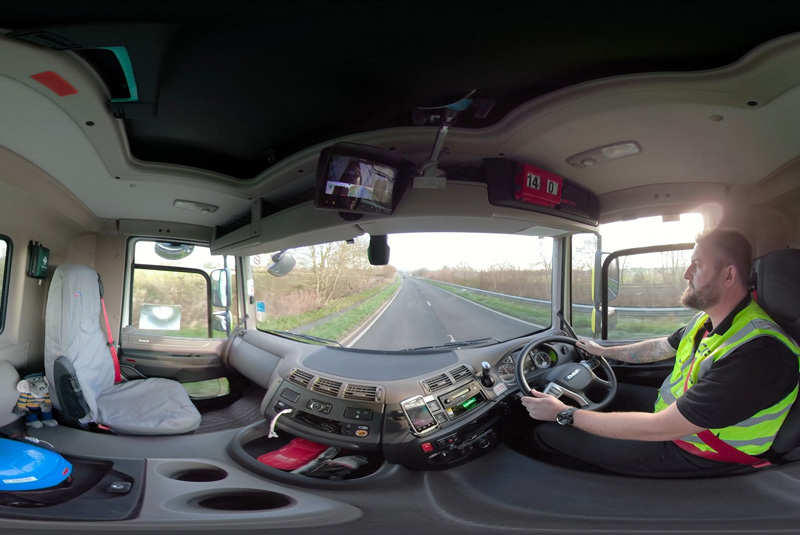
Travis Perkins has used virtual reality technology to train over 1,000 drivers who work across the Group’s CCF, BSS and Keyline businesses, in a bid to deliver significant environmental benefits.
The virtual reality method has been used to help improve learning as part of the Group’s Certificate of Professional Competence (CPC) compliance training, which is recognised by the FORS scheme.
Using virtual reality has reportedly enabled Travis Perkins to facilitate learning in a quicker and more accessible way. The method has also enabled the company to use its own Driver of the Year, Richard Ellson, in the simulations, taking drivers through his journey and showing them his view of the road from behind the wheel, and showcasing in practical and visible terms how he handles obstacles along local roads.
Travis Perkins delivered the training through group workshops, where each driver who took part was provided with a set of virtual reality goggles and workbooks that were signed off after each exercise by the facilitator.
The three businesses which took part have reportedly already seen benefits including saving more than 466,000 litres in fuel in 2018 as a result of improved Miles Per Gallon.
Head of Fleet for Travis Perkins, Karl Wilshaw, said: “It’s been great to be part of this milestone training, and inspiring to see the ability that virtual reality has to reach our drivers and bring scenarios to life. This type of training has completely transformed the way we can show how drivers should conduct walk-around checks, drive more fuel efficiently, manoeuvre vehicles and handle road risk challenges. Thanks to The Resources Group who shaped the initial idea, we have been able to develop, build and deliver the programme.”
Katie Robinson, Head of Strategic Relationships for The Resources Group, added: “We specialise in material handling and safety training to raise standards of workplace training, and have worked closely with Karl and his team to integrate the virtual technology training.
“It’s been good to see how this training has enabled drivers to immerse themselves in their own environment, and how we have been able to use Travis Perkins’ own people to share knowledge and achieve some excellent results. We feel that integrating this innovative approach to learning offers an array of pathways and prospects for future training opportunities, and we very much look forward to pursuing these further.”
Travis Perkins has said it will continue its commitment to improving safety and fuel economy on the roads with the development of technology, such as the introduction of electric vehicles, and by engaging and rewarding colleagues who successfully reduce fuel consumption and carbon emissions.









